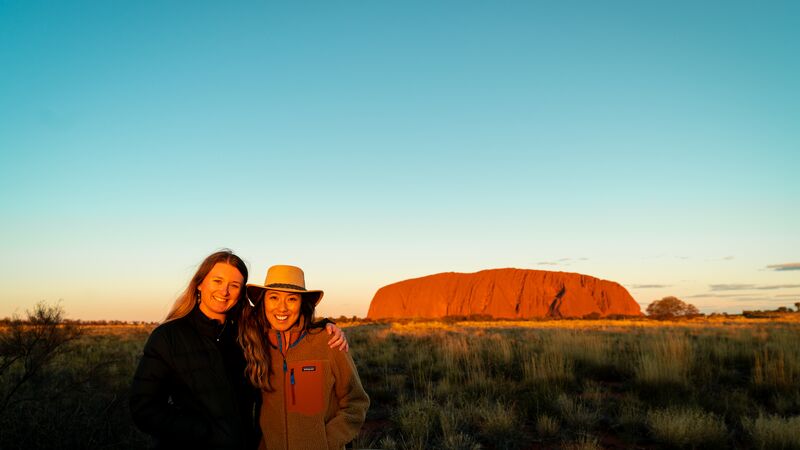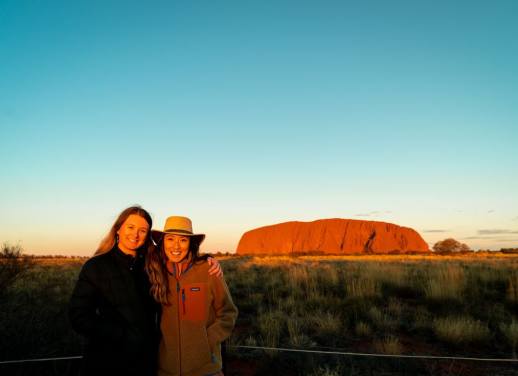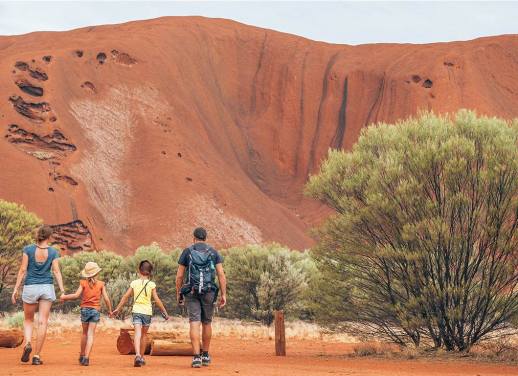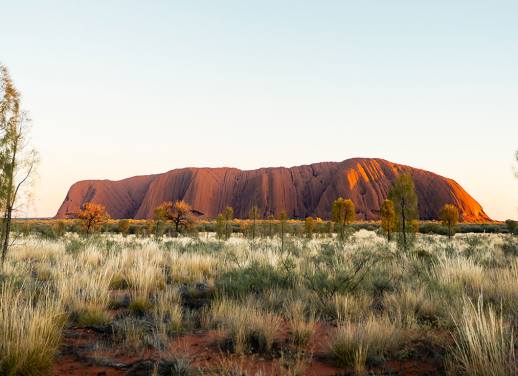Having experienced the Red Centre’s rising monolith firsthand, writer Kate Gazzard reflects on the dos and don’ts of respectfully visiting Uluru.
Uluru is often referred to as the spiritual heart of Australia, not only because of its central location but also for its great significance to Australia’s First Nations peoples (and more specifically to the Anangu, the Traditional Custodians of Uluru).
Although it may look like just a rock to most of us (albeit a very spectacular, impressive rock), Uluru is actually a sacred area – the home of important Tjukurpa (Creation) stories that have been passed down through generations of Anangu People over thousands of years.
When you visit Uluru, your local guide will tell you some of these stories as you embark on the Kuniya walk to the Mutitjulu Waterhole around the rock’s base and as you listen, they’ll come to life on Uluru’s rusty-coloured surface. I know this because I experienced it first hand on Intrepid’s Best of Uluru & King’s Canyon trip.
I knew witnessing this natural wonder in all its majestic, 500-million-year-old glory would be one of my favourite travel experiences to date, but I didn’t know there were restrictions around what you can and can’t do at Uluru. From using its colonised name to snapping photos at some of the rock’s most sacred sites, here’s what not to do at Uluru-Kata Tjuta National Park.
1. Don’t call it Ayers Rock
While you might be staying at ‘Ayers Rock Resort’, you shouldn’t really be calling Uluru by its colonized name. Explorer William Gosse (the first non-Aboriginal person to catch a glimpse of Uluru in 1873), named the rock after his superior, Sir Henry Ayers (the Chief Secretary of South Australia at the time), in one of the most severe cases of teacher’s pet-itis the world has ever seen.
Technically, there’s nothing stopping you from calling it Ayers Rock. But you can’t hear the Anangu’s Tjukurpa stories or marvel at their daily life depictions that colour the rock’s cave walls without wanting to show this culture the deepest respect and acknowledge their custodianship of the land.
However, the rock was always Uluru to the Anangu people and this was officially recognised as its rightful name, first in 1993 when it became Ayers Rock/Uluru and second in 2002 when it became Uluru/Ayers Rock.
2. Don’t take photos of sacred sites
While there are plenty of sites around Uluru where you can take photos – Uluru is one of the most photographed natural wonders in the world after all – there are a few sites where you can’t, out of respect for the Anangu people.
One of these places is Mala Puta, an Anangu site that details women’s business via paintings on the rock’s surface. It’s culturally sensitive and is still used by senior Anangu women today to communicate stories to the younger generations.
Pulari is another culturally significant, sensitive site to the Anangu women. And while the rock art depicted here is well preserved, it’s enough to just see it with your own eyes and listen to the stories of how it got there in the first place. Trust me and put your camera away.
Read more: Everything you need to know about Uluru
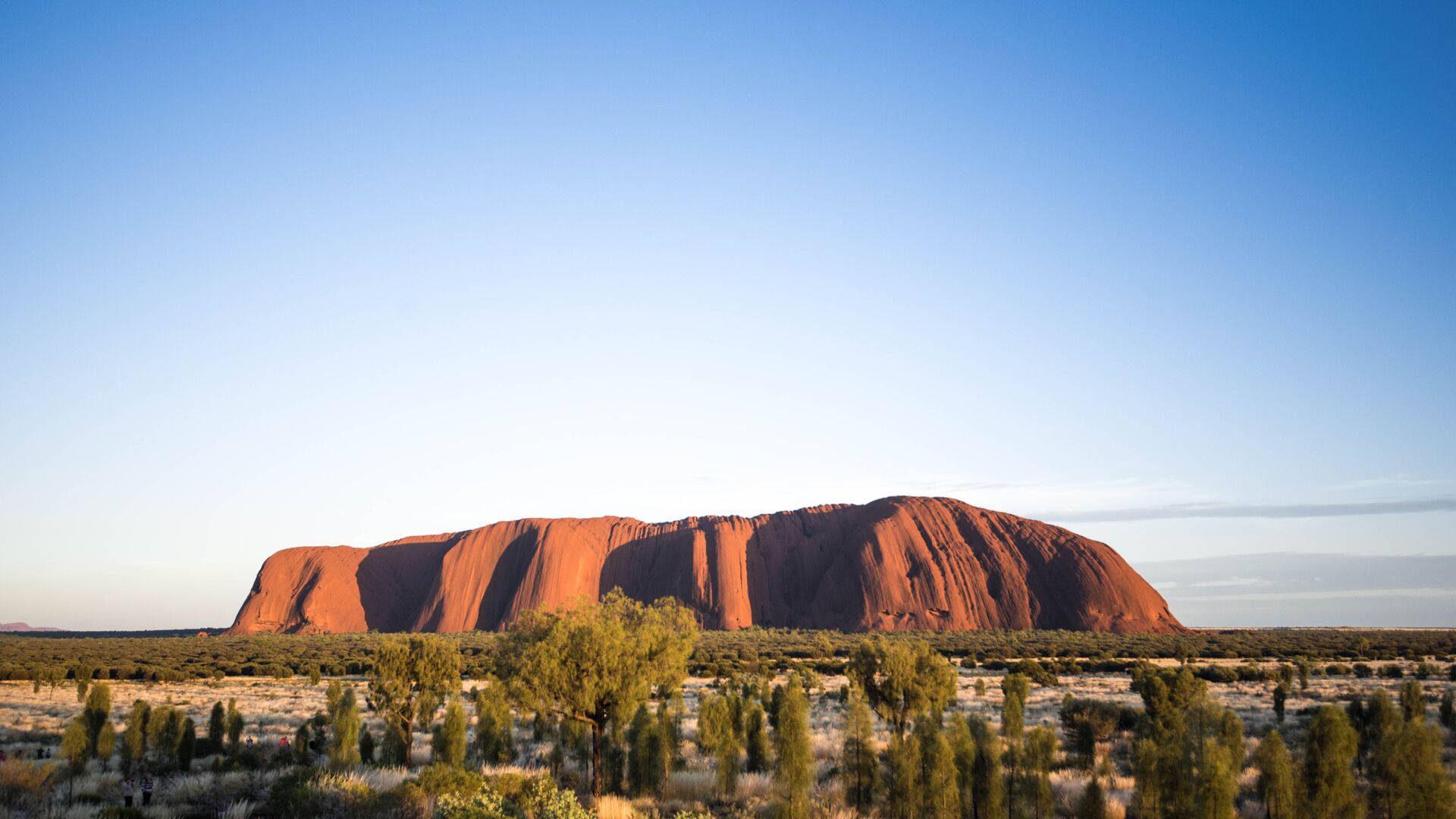
3. Don’t climb the rock
The first record of people climbing Uluru dates back to the 1930s and up until 2019, it was a popular activity among those looking for a challenging experience. The 2019 ban came after years of tireless campaigning by the Anangu people, who view climbing Uluru as deeply disrespectful – akin to climbing onto a church altar or holy shrine.
Now, the only way to experience the beauty of Uluru is by walking around it (or viewing it from above on a scenic flight), but you can still see the trail left by climbers, a white mark that locals call the ‘scar of Uluru’.
4. Don’t swim in sacred watering holes
The Mutitjulu Waterhole is one of the most peaceful places you’ll ever visit. The pathway to the waterhole is lined with native trees and their foliage creates a shelter of sorts, largely protecting you from the sun’s piercing rays. You can hear the wind gently rippling the water’s surface the closer you get and it’s easy to imagine Kuniya’s (the Woma Python Woman) spirit protecting the nearby caves for the Anangu people to use.
Taking some time to sit and be with the nature you hear and the sights you see is encouraged. You’ll undoubtedly feel a stronger connection to the land and the creation stories you’ve heard along the Kuniya walk on your way to the waterhole. Yes, the water might look inviting (especially on a 36°C day) but the Mutitjulu Waterhole is a sacred site and out of respect for the Anangu culture, swimming in it or even touching the water is prohibited.
Read more: Why Uluru is so much more than a rock
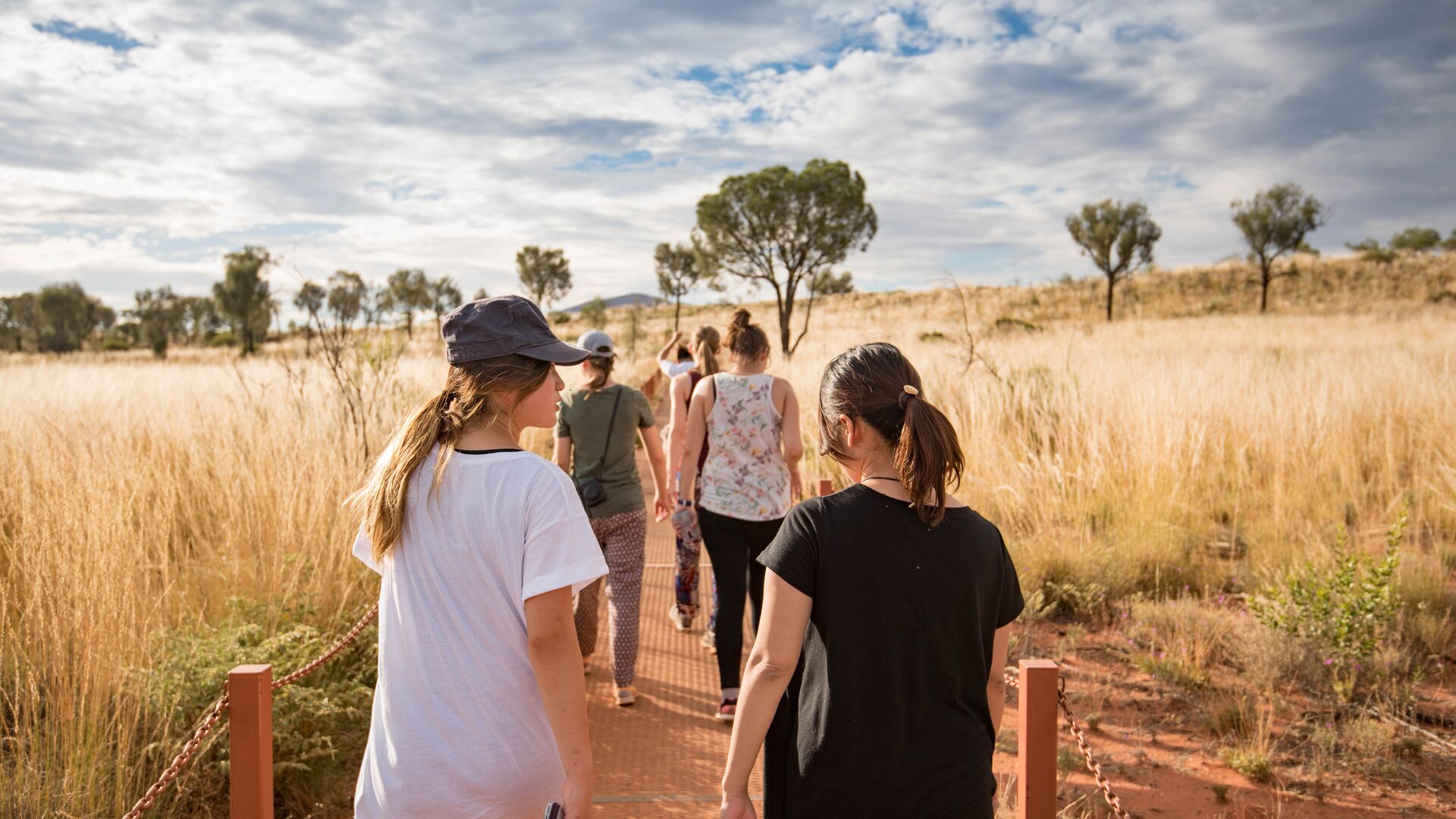
5. Don’t go searching for Kata Tjuta creation stories
There’s a lot of information on Anangu creation stories at the cultural centre in Uluru-Kata Tjuta National Park (and around the base of the rock itself). Still, not every part of the park has a story or ancestral being that’s culturally appropriate for you to hear about. Take Kata Tjuta for example.
The domes at Kata Tjuta remain an important men’s business site and regular ceremonies are still held throughout the year. For this reason, knowledge of the Tjukurpa stories and cultural activities that go on here is restricted to initiated Anangu men and are not to be shared with travellers to the area.
Explore Uluru with Intrepid’s local leaders and local Anangu guides.

